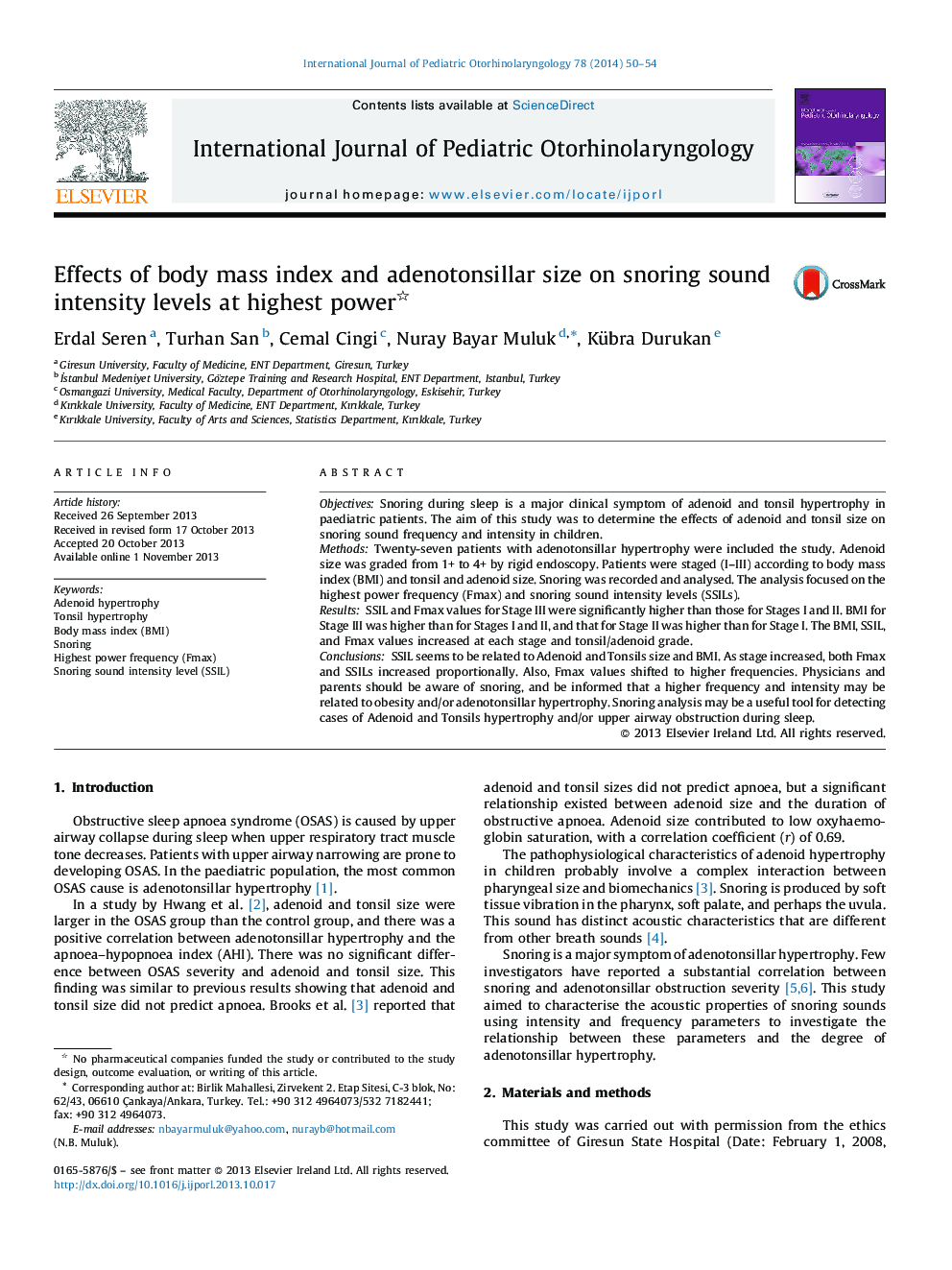| کد مقاله | کد نشریه | سال انتشار | مقاله انگلیسی | نسخه تمام متن |
|---|---|---|---|---|
| 4112275 | 1606012 | 2014 | 5 صفحه PDF | دانلود رایگان |
ObjectivesSnoring during sleep is a major clinical symptom of adenoid and tonsil hypertrophy in paediatric patients. The aim of this study was to determine the effects of adenoid and tonsil size on snoring sound frequency and intensity in children.MethodsTwenty-seven patients with adenotonsillar hypertrophy were included the study. Adenoid size was graded from 1+ to 4+ by rigid endoscopy. Patients were staged (I–III) according to body mass index (BMI) and tonsil and adenoid size. Snoring was recorded and analysed. The analysis focused on the highest power frequency (Fmax) and snoring sound intensity levels (SSILs).ResultsSSIL and Fmax values for Stage III were significantly higher than those for Stages I and II. BMI for Stage III was higher than for Stages I and II, and that for Stage II was higher than for Stage I. The BMI, SSIL, and Fmax values increased at each stage and tonsil/adenoid grade.ConclusionsSSIL seems to be related to Adenoid and Tonsils size and BMI. As stage increased, both Fmax and SSILs increased proportionally. Also, Fmax values shifted to higher frequencies. Physicians and parents should be aware of snoring, and be informed that a higher frequency and intensity may be related to obesity and/or adenotonsillar hypertrophy. Snoring analysis may be a useful tool for detecting cases of Adenoid and Tonsils hypertrophy and/or upper airway obstruction during sleep.
Journal: International Journal of Pediatric Otorhinolaryngology - Volume 78, Issue 1, January 2014, Pages 50–54
